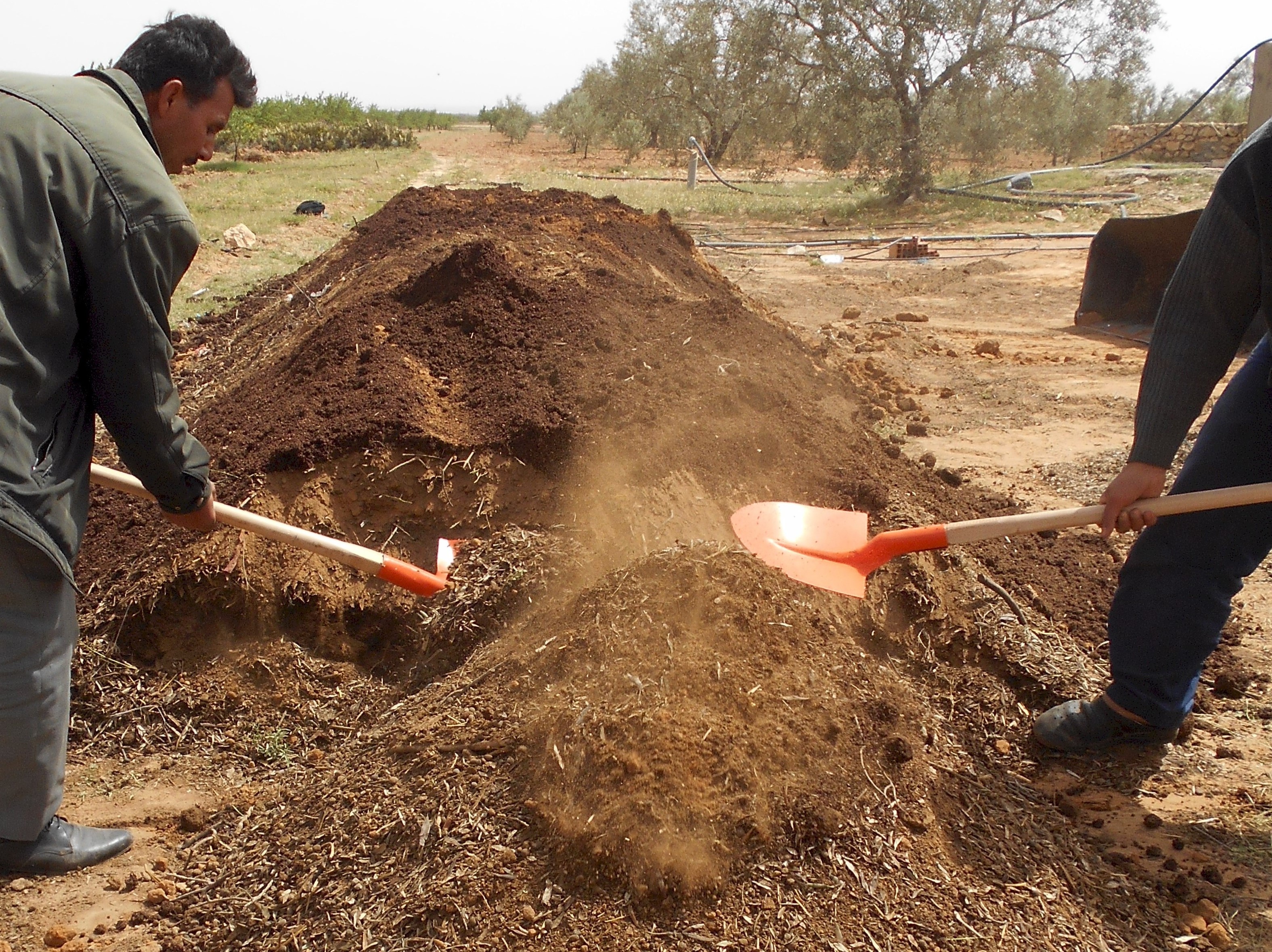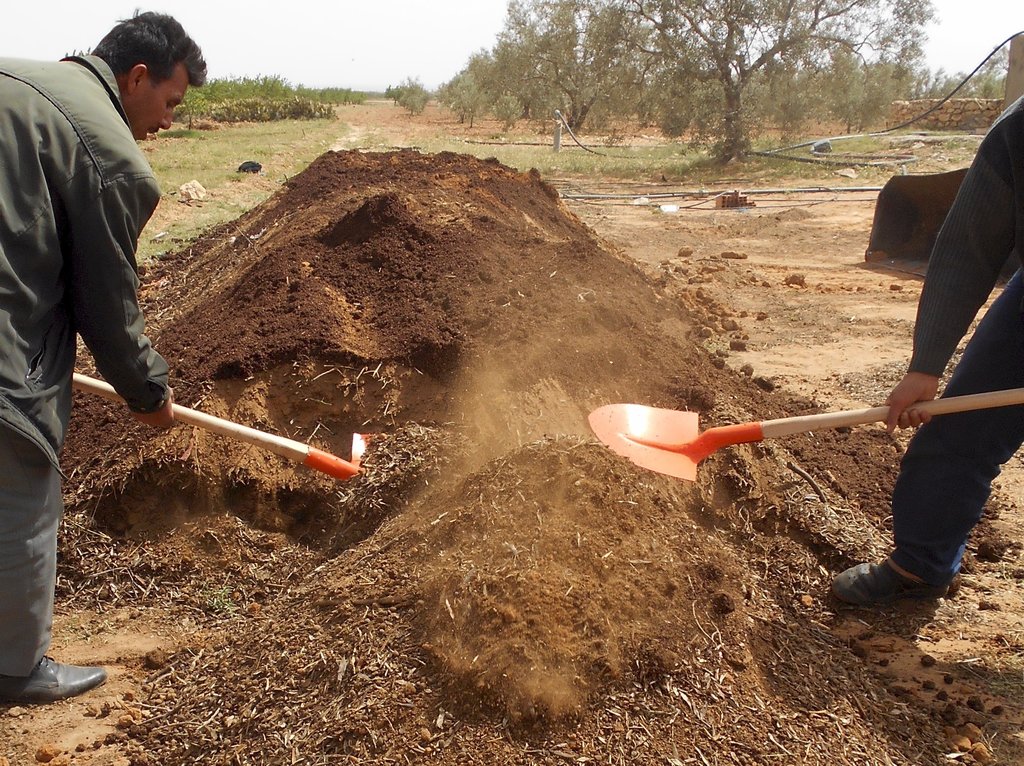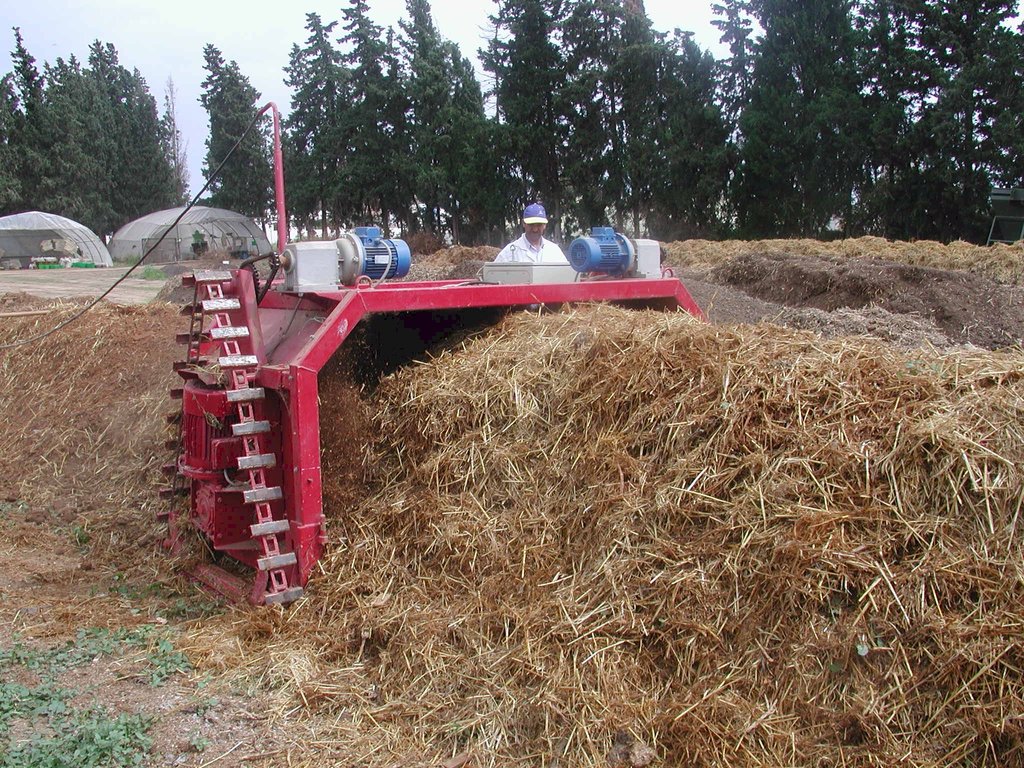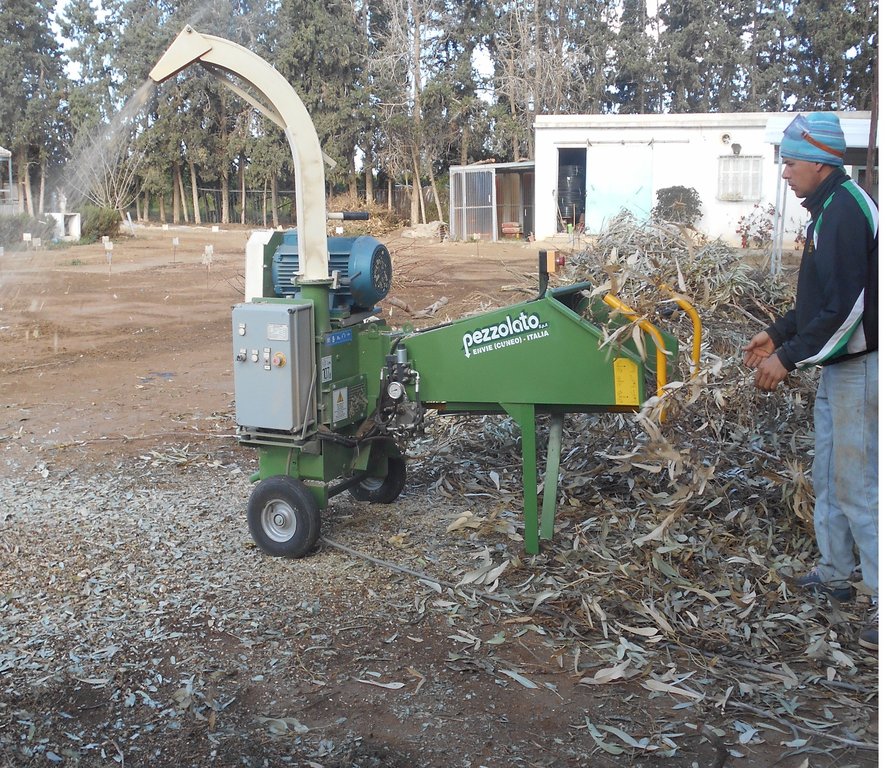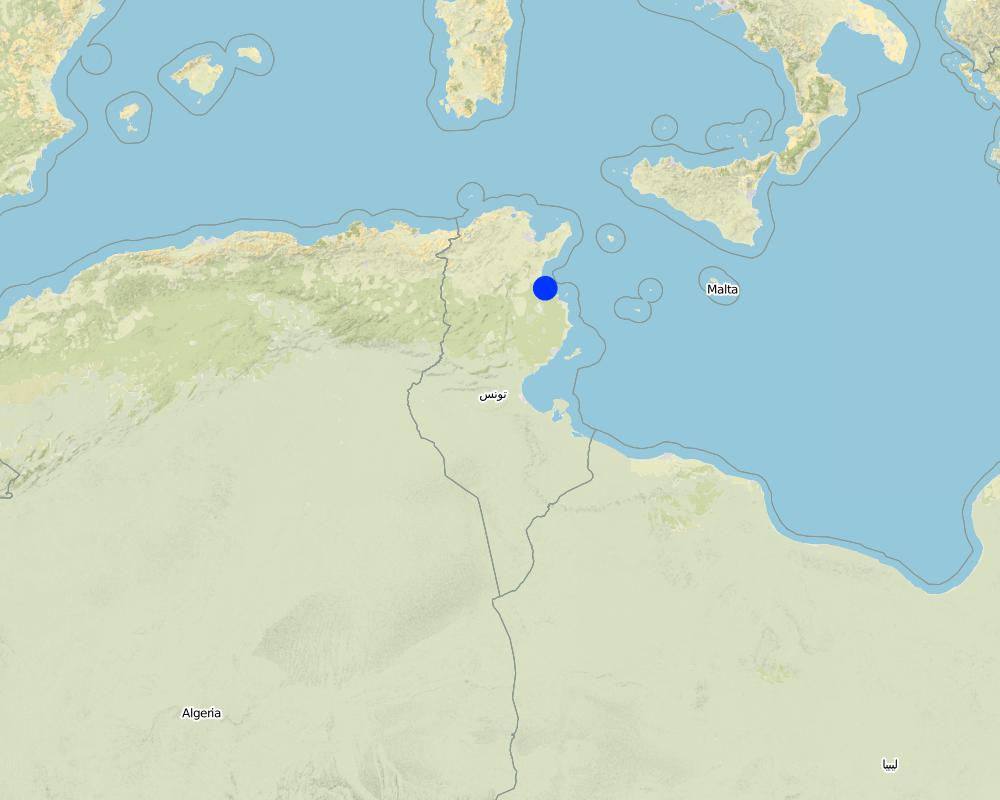Compostage des déchets organiques en Agriculture Biologique. [Tunisia]
- Creation:
- Update:
- Compiler: Donia Mühlematter
- Editor: Hanem Grissa
- Reviewers: Donia Mühlematter, Alexandra Gavilano
Compostage
technologies_3726 - Tunisia
- Full summary as PDF
- Full summary as PDF for print
- Full summary in the browser
- Full summary (unformatted)
- Compostage des déchets organiques en Agriculture Biologique.: Sept. 21, 2018 (inactive)
- Compostage des déchets organiques en Agriculture Biologique.: Aug. 21, 2019 (public)
- Compostage des déchets organiques en Agriculture Biologique.: Mei 30, 2018 (inactive)
- Compostage des déchets organiques en Agriculture Biologique.: Junie 4, 2018 (inactive)
- Compostage des déchets organiques en Agriculture Biologique.: Mei 25, 2018 (inactive)
View sections
Expand all Collapse all1. General information
1.2 Contact details of resource persons and institutions involved in the assessment and documentation of the Technology
Key resource person(s)
SLM specialist:
Grissa Hanem
Centre Technique de l'Agriculture Biologique
Tunisia
Name of project which facilitated the documentation/ evaluation of the Technology (if relevant)
Decision Support for Mainstreaming and Scaling out Sustainable Land Management (GEF-FAO / DS-SLM)Name of the institution(s) which facilitated the documentation/ evaluation of the Technology (if relevant)
Centre Technique de l'Agriculture Biologique (CTAB) - Tunisia1.3 Conditions regarding the use of data documented through WOCAT
The compiler and key resource person(s) accept the conditions regarding the use of data documented through WOCAT:
Ja
1.4 Declaration on sustainability of the described Technology
Is the Technology described here problematic with regard to land degradation, so that it cannot be declared a sustainable land management technology?
Nee
1.5 Reference to Questionnaire(s) on SLM Approaches (documented using WOCAT)
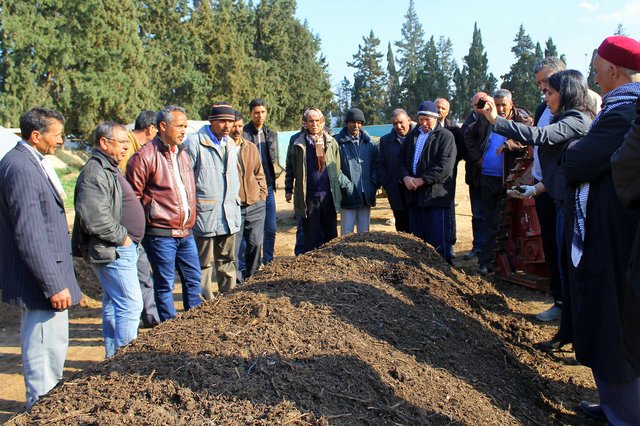
Immense demande de valorisation des déchets et amélioration … [Tunisia]
Une immense demande de la technique du compostage comme une solution environmentale et écologique pour la gestion des déchets et un traitement obligatoire des dechets organiques en agriculture biologique.
- Compiler: Donia Mühlematter
2. Description of the SLM Technology
2.1 Short description of the Technology
Definition of the Technology:
Le compostage est un procédé de décomposition des déchets organiques fermentescibles par des micro-organismes dans des conditions controlées.
2.2 Detailed description of the Technology
Description:
* Environnement naturel et humain terrain agricole, stationné plates formes du compostage.
* Principales caractéristiques :
- La technique permet l’obtention d’une matière fertilisante stabilisée riche en composés humiques, le compost, susceptible d’être utilisé au tant qu’amendement organique améliorant aussi bien la structure que la fertilité des sols.
- Le compostage est essentiellement basé sur l’action des micro-organismes qui transforment les matériaux à composter. Les procédés de contrôle de la production portent principalement sur les principaux paramètres (la température, l’humidité, le rapport C/N …).
*Objectifs :
+ Valorisation des déchets organiques en amendement organique et préserver l’environnement.
+ Recyclage des matières organiques et boucler les cycles naturels.
+ Retour de la matière organique dans le sol.
+ Diminuer le recours aussi bien aux fertilisants qu’aux pesticides en plus de favoriser la conservation de l’eau.
+ Améliorer les caractéristiques physico-chimiques et biologiques des sols.
+ Assainissement vis-à-vis des adventices et des pathogènes et aussi des agents pathogènes et parasites des animaux.
+ L’efficacité des composts dans la protection des plantes contre les maladies.
* Activités : Collecte des déchets, broyage des déchets, mise en place du tas, retournement, irrigation, évaluation de la maturité, tamisage et conditionnement.
* Intrants majeurs : les déchets organiques disponibles localement chez les agriculteurs d'origine agricole (végétale, animale), municipale, forestier, agroalimentaire, marine, ...
La technologie du compostage est appréciée par les exploitants des terres car le compost contribue à l'entretien des stocks de matière organique et améliore la fertilité des sols : stabilisation de la structure, libération d'éléments nutritifs pour les végétaux, lutte contre l'érosion, ... Ainsi que la protection des plantes contre les maladies et l'amélioration de la production.
2.3 Photos of the Technology
2.4 Videos of the Technology
Location:
Chott Meriem, Sousse
Name of videographer:
Hanem Grissa (TV Wataniya 1)
2.5 Country/ region/ locations where the Technology has been applied and which are covered by this assessment
Country:
Tunisia
Region/ State/ Province:
Chott Meriem, Sousse
Specify the spread of the Technology:
- evenly spread over an area
If precise area is not known, indicate approximate area covered:
- < 0.1 km2 (10 ha)
Map
×2.6 Date of implementation
Indicate year of implementation:
2000
If precise year is not known, indicate approximate date:
- 10-50 years ago
2.7 Introduction of the Technology
- Dans le cadre de programme de l'Agriculture Biologique en Tunisie.
3. Classification of the SLM Technology
3.1 Main purpose(s) of the Technology
- improve production
- reduce, prevent, restore land degradation
- conserve ecosystem
- preserve/ improve biodiversity
- reduce risk of disasters
- create beneficial economic impact
3.2 Current land use type(s) where the Technology is applied

Cropland
- Annual cropping
- Perennial (non-woody) cropping
- Tree and shrub cropping
- La plupart des cultures maraîchères, plantes aromatiques et médicinales, agrumes, oliviers et vigne
Number of growing seasons per year:
- 1

Settlements, infrastructure
- Settlements, buildings
Remarks:
Magazin de stockage des intrants et des outils.
3.3 Has land use changed due to the implementation of the Technology?

Cropland
- Tree and shrub cropping
Tree and shrub cropping - Specify crops:
- olive
- Plantation de l'olive de table et de la vigne.
3.4 Water supply
Water supply for the land on which the Technology is applied:
- mixed rainfed-irrigated
Comments:
Irrigation de pointe complémentaire.
3.5 SLM group to which the Technology belongs
- integrated soil fertility management
- integrated pest and disease management (incl. organic agriculture)
- waste management/ waste water management
3.6 SLM measures comprising the Technology

agronomic measures
- A1: Vegetation/ soil cover
- A2: Organic matter/ soil fertility
- A3: Soil surface treatment
- A5: Seed management, improved varieties

vegetative measures
- V1: Tree and shrub cover
- V2: Grasses and perennial herbaceous plants
- V4: Replacement or removal of alien/ invasive species
- V5: Others

structural measures
- S5: Dams, pans, ponds
- S6: Walls, barriers, palisades, fences
- S7: Water harvesting/ supply/ irrigation equipment
- S9: Shelters for plants and animals

management measures
- M1: Change of land use type
- M2: Change of management/ intensity level
- M3: Layout according to natural and human environment
- M4: Major change in timing of activities
- M5: Control/ change of species composition
- M6: Waste management (recycling, re-use or reduce)
3.7 Main types of land degradation addressed by the Technology

soil erosion by water
- Wt: loss of topsoil/ surface erosion

soil erosion by wind
- Et: loss of topsoil

chemical soil deterioration
- Cn: fertility decline and reduced organic matter content (not caused by erosion)
- Cp: soil pollution
- Cs: salinization/ alkalinization

physical soil deterioration
- Pc: compaction
- Pk: slaking and crusting
- Pi: soil sealing
- Pw: waterlogging
- Ps: subsidence of organic soils, settling of soil
- Pu: loss of bio-productive function due to other activities

biological degradation
- Bc: reduction of vegetation cover
- Bh: loss of habitats
- Bq: quantity/ biomass decline
- Bs: quality and species composition/ diversity decline
- Bl: loss of soil life
- Bp: increase of pests/ diseases, loss of predators

water degradation
- Hp: decline of surface water quality
- Hq: decline of groundwater quality
3.8 Prevention, reduction, or restoration of land degradation
Specify the goal of the Technology with regard to land degradation:
- prevent land degradation
- reduce land degradation
4. Technical specifications, implementation activities, inputs, and costs
4.1 Technical drawing of the Technology
Technical specifications (related to technical drawing):
Dimensions :
- Hauteur et largeur : selon l’équipement ou les outils de retournement du tas du compost
- Longueur : selon la quantité des déchets organique disponible sur terrain
Tas du compost à la station du compostage du CTAB à Chott Marien :
Hauteur : 1 m
Largeur : 2 m
Longueur : entre 5 et 15 m : selon la quantité disponible et/ou la quantité à produire
Retournement : - par un retourneur d’andain dont les dimensions : largeur : 2 m et hauteur : 1 m
- retournement manuel : Main d’œuvre si nécessaire
Author:
Hanem Grissa
Date:
14/05/2018
4.2 General information regarding the calculation of inputs and costs
Specify how costs and inputs were calculated:
- per Technology unit
Specify unit:
10 tonnes
other/ national currency (specify):
Dinar Tunisien
If relevant, indicate exchange rate from USD to local currency (e.g. 1 USD = 79.9 Brazilian Real): 1 USD =:
2.45
Indicate average wage cost of hired labour per day:
20 Dinar Tunisien.
4.3 Establishment activities
| Activity | Timing (season) | |
|---|---|---|
| 1. | Collecte des déchets verts (approvisionnement sur site ou achat) | Décembre - Janvier |
| 2. | Broyage des déchets | Janvier - Février |
| 3. | Mise en tas des déchets | Février |
| 4. | Retournement : 1er jour de compostage afin d'assurer l'homogénéité du compostet contrôle de l'humidité | Février |
4.4 Costs and inputs needed for establishment
| Specify input | Unit | Quantity | Costs per Unit | Total costs per input | % of costs borne by land users | |
|---|---|---|---|---|---|---|
| Labour | Ouvriers | heure/jour | 0.5 | 20.0 | 10.0 | 100.0 |
| Equipment | Broyeur | |||||
| Equipment | Retournement d'andain. | minute | 8.0 | 0.4 | 3.2 | 100.0 |
| Equipment | Mise en place | heure | 1.5 | 2.0 | 3.0 | 100.0 |
| Plant material | Fumier bovin | tonne | 7.0 | 37.0 | 259.0 | 100.0 |
| Plant material | Déchets verts | tonne | 0.5 | 5.6 | 2.8 | 100.0 |
| Plant material | Fumier ovin | tonne | 2.5 | 37.0 | 92.5 | 100.0 |
| Total costs for establishment of the Technology | 370.5 | |||||
| Total costs for establishment of the Technology in USD | 151.22 | |||||
If land user bore less than 100% of costs, indicate who covered the remaining costs:
L'exploitant des terres dans ce cas est le CTAB qui a financé tous les intrants.
4.5 Maintenance/ recurrent activities
| Activity | Timing/ frequency | |
|---|---|---|
| 1. | Retournement du tas afin d'assurer l'aération du compost et ajuster la température et l'humidité | En fonction de la température et de l'humidité. |
| 2. | Irrigation du compost. | Selon le taux d'humidité. |
| 3. | Évalution de la maturité du compost (test de phyto-toxicité) | Aprés 3 mois jusqu'à la maturité finale. |
| 4. | Tamisage selon la qualité et la texture du compost afin de récupérer une partie des matières organiques non compostés. | avant utilisation. |
| 5. | Conditionnement: conserver le compost dans l'abri. | Jusqu'à utilisation. |
4.6 Costs and inputs needed for maintenance/ recurrent activities (per year)
| Specify input | Unit | Quantity | Costs per Unit | Total costs per input | % of costs borne by land users | |
|---|---|---|---|---|---|---|
| Equipment | Retournement d'andain. | minute | 30.0 | 0.4 | 12.0 | 100.0 |
| Equipment | Irrigation | m3 | 6.5 | 0.15 | 0.97 | 100.0 |
| Total costs for maintenance of the Technology | 12.97 | |||||
| Total costs for maintenance of the Technology in USD | 5.29 | |||||
4.7 Most important factors affecting the costs
Describe the most determinate factors affecting the costs:
- Diminution de la quantité des déchets organiques de 50% par rapport à la quantité initiale, la composition initiale du compost permet d'obtenir environ 5 tonnes du compost.
- Le montant alloué à l'achat de matière première est le plus important.
5. Natural and human environment
5.1 Climate
Annual rainfall
- < 250 mm
- 251-500 mm
- 501-750 mm
- 751-1,000 mm
- 1,001-1,500 mm
- 1,501-2,000 mm
- 2,001-3,000 mm
- 3,001-4,000 mm
- > 4,000 mm
Specify average annual rainfall (if known), in mm:
200.00
Specifications/ comments on rainfall:
Pluviométrie irrigulière.
Indicate the name of the reference meteorological station considered:
Centre Régional de Recherche en Horticulture et Agriculture Biologique à Chott Meriem.
Agro-climatic zone
- semi-arid
5.2 Topography
Slopes on average:
- flat (0-2%)
- gentle (3-5%)
- moderate (6-10%)
- rolling (11-15%)
- hilly (16-30%)
- steep (31-60%)
- very steep (>60%)
Landforms:
- plateau/plains
- ridges
- mountain slopes
- hill slopes
- footslopes
- valley floors
Altitudinal zone:
- 0-100 m a.s.l.
- 101-500 m a.s.l.
- 501-1,000 m a.s.l.
- 1,001-1,500 m a.s.l.
- 1,501-2,000 m a.s.l.
- 2,001-2,500 m a.s.l.
- 2,501-3,000 m a.s.l.
- 3,001-4,000 m a.s.l.
- > 4,000 m a.s.l.
Indicate if the Technology is specifically applied in:
- not relevant
5.3 Soils
Soil depth on average:
- very shallow (0-20 cm)
- shallow (21-50 cm)
- moderately deep (51-80 cm)
- deep (81-120 cm)
- very deep (> 120 cm)
Soil texture (topsoil):
- medium (loamy, silty)
Soil texture (> 20 cm below surface):
- medium (loamy, silty)
Topsoil organic matter:
- high (>3%)
If available, attach full soil description or specify the available information, e.g. soil type, soil PH/ acidity, Cation Exchange Capacity, nitrogen, salinity etc.
Le taux de la matière organique est de 0.5 % avant l'utilisation du compost et de 3.5 % aprés 15 d'épandage du compost.
Salinité faible, pH: 7 - 8
5.4 Water availability and quality
Ground water table:
5-50 m
Availability of surface water:
good
Water quality (untreated):
good drinking water
Is water salinity a problem?
Ja
Specify:
La salinité dépend de la zone.
Is flooding of the area occurring?
Nee
Comments and further specifications on water quality and quantity:
L'eau d'irrigation est disponible à partir de barrage de Nebhana.
C'est une zone trés proche de la mer.
5.5 Biodiversity
Species diversity:
- high
Habitat diversity:
- high
5.6 Characteristics of land users applying the Technology
Sedentary or nomadic:
- Sedentary
Market orientation of production system:
- mixed (subsistence/ commercial)
Off-farm income:
- 10-50% of all income
Relative level of wealth:
- average
Individuals or groups:
- employee (company, government)
Level of mechanization:
- manual work
- mechanized/ motorized
Gender:
- women
Age of land users:
- youth
5.7 Average area of land used by land users applying the Technology
- < 0.5 ha
- 0.5-1 ha
- 1-2 ha
- 2-5 ha
- 5-15 ha
- 15-50 ha
- 50-100 ha
- 100-500 ha
- 500-1,000 ha
- 1,000-10,000 ha
- > 10,000 ha
Is this considered small-, medium- or large-scale (referring to local context)?
- medium-scale
5.8 Land ownership, land use rights, and water use rights
Land ownership:
- state
Land use rights:
- communal (organized)
- CTAB
Water use rights:
- communal (organized)
5.9 Access to services and infrastructure
health:
- poor
- moderate
- good
education:
- poor
- moderate
- good
technical assistance:
- poor
- moderate
- good
employment (e.g. off-farm):
- poor
- moderate
- good
markets:
- poor
- moderate
- good
energy:
- poor
- moderate
- good
roads and transport:
- poor
- moderate
- good
drinking water and sanitation:
- poor
- moderate
- good
financial services:
- poor
- moderate
- good
Zone touristique :
- poor
- moderate
- good
6. Impacts and concluding statements
6.1 On-site impacts the Technology has shown
Socio-economic impacts
Production
crop production
crop quality
risk of production failure
product diversity
Water availability and quality
irrigation water availability
demand for irrigation water
Income and costs
expenses on agricultural inputs
farm income
diversity of income sources
economic disparities
workload
Other socio-economic impacts
valorisation des déchets de la région
création d'emploi
Socio-cultural impacts
food security/ self-sufficiency
health situation
recreational opportunities
community institutions
national institutions
SLM/ land degradation knowledge
conflict mitigation
situation of socially and economically disadvantaged groups
Ecological impacts
Water cycle/ runoff
water quantity
surface runoff
excess water drainage
evaporation
Soil
soil moisture
soil cover
soil loss
soil crusting/ sealing
soil compaction
nutrient cycling/ recharge
salinity
soil organic matter/ below ground C
acidity
Biodiversity: vegetation, animals
Vegetation cover
biomass/ above ground C
plant diversity
invasive alien species
beneficial species
habitat diversity
pest/ disease control
Climate and disaster risk reduction
flood impacts
landslides/ debris flows
drought impacts
emission of carbon and greenhouse gases
micro-climate
6.2 Off-site impacts the Technology has shown
water availability
groundwater/ river pollution
buffering/ filtering capacity
wind transported sediments
damage on neighbours' fields
impact of greenhouse gases
6.3 Exposure and sensitivity of the Technology to gradual climate change and climate-related extremes/ disasters (as perceived by land users)
Gradual climate change
Gradual climate change
| Season | increase or decrease | How does the Technology cope with it? | |
|---|---|---|---|
| annual temperature | increase | well | |
| seasonal temperature | dry season | increase | well |
| annual rainfall | decrease | well | |
| seasonal rainfall | wet/ rainy season | decrease | well |
Climate-related extremes (disasters)
Meteorological disasters
| How does the Technology cope with it? | |
|---|---|
| local rainstorm | well |
Biological disasters
| How does the Technology cope with it? | |
|---|---|
| epidemic diseases | very well |
Other climate-related consequences
Other climate-related consequences
| How does the Technology cope with it? | |
|---|---|
| reduced growing period | well |
Comments:
Le compost est produit selon la norme tunisienne de l'amendement organique et les réglementation de l'agriculture biologique.
6.4 Cost-benefit analysis
How do the benefits compare with the establishment costs (from land users’ perspective)?
Short-term returns:
positive
Long-term returns:
very positive
How do the benefits compare with the maintenance/ recurrent costs (from land users' perspective)?
Short-term returns:
very positive
Long-term returns:
very positive
6.5 Adoption of the Technology
- 1-10%
Of all those who have adopted the Technology, how many did so spontaneously, i.e. without receiving any material incentives/ payments?
- 91-100%
Comments:
Cette technologie (Compast à base des déchets organiques) est obligatoire dans l'agriculture biologique.
6.6 Adaptation
Has the Technology been modified recently to adapt to changing conditions?
Ja
other (specify):
Disponibilté de la matière première
6.7 Strengths/ advantages/ opportunities of the Technology
| Strengths/ advantages/ opportunities in the land user’s view |
|---|
| Disponibilité des déchets organiques à proximité et au niveau de l'exploitation agricole. |
| Le compostage améliore la fertilité des sols et modifie ses propriétés physico-chimiques et biologiques et protège les plantes contre les maladies. |
| Le compost fournit les éléments nutritifs nécessaires au développement de la plante. |
| Strengths/ advantages/ opportunities in the compiler’s or other key resource person’s view |
|---|
| Technique facile à adopter par les exploitants. |
| Valorisation des déchets organiques en amendement organique. |
| Subvention de 50 % du coût des investissements pour les équipements et instruments et moyens spécifiques à la production du compost. |
6.8 Weaknesses/ disadvantages/ risks of the Technology and ways of overcoming them
| Weaknesses/ disadvantages/ risks in the land user’s view | How can they be overcome? |
|---|---|
| Coût d'investissement initial élévé dans l'achat de broyeur. | Encouragement d'implanter les GDA et SMSA. |
| Processus un peu difficile pour un exploitant débutant, qui manque de technicité pour la production du compost. | Accompagnement et encadrement des exploitants sur terrain. |
| Weaknesses/ disadvantages/ risks in the compiler’s or other key resource person’s view | How can they be overcome? |
|---|---|
| Promotion des fournisseurs des instruments et des équipements produits localement est limitée. | Encouragement des fournisseurs locaux à promouvoir leurs services. |
7. References and links
7.1 Methods/ sources of information
- field visits, field surveys
1
- interviews with land users
1
- interviews with SLM specialists/ experts
4 experts de CTAB.
7.3 Links to relevant online information
Title/ description:
Agriculture biologique en tunisie Un créneau porteur
URL:
http://fesa.over-blog.org/article-agriculture-biologique-en-tunisie-un-creneau-porteur-2-62245035.html
Title/ description:
Compostage
URL:
http://www.apia.com.tn/medias/files/compostage.pdf
Title/ description:
Etude et évaluation du compostage de différents types de matières organiques et des effets des jus de composts biologiques sur les maladies des plantes
URL:
http://orgprints.org/3064/1/Etude.pdf
Links and modules
Expand all Collapse allLinks

Immense demande de valorisation des déchets et amélioration … [Tunisia]
Une immense demande de la technique du compostage comme une solution environmentale et écologique pour la gestion des déchets et un traitement obligatoire des dechets organiques en agriculture biologique.
- Compiler: Donia Mühlematter
Modules
No modules


